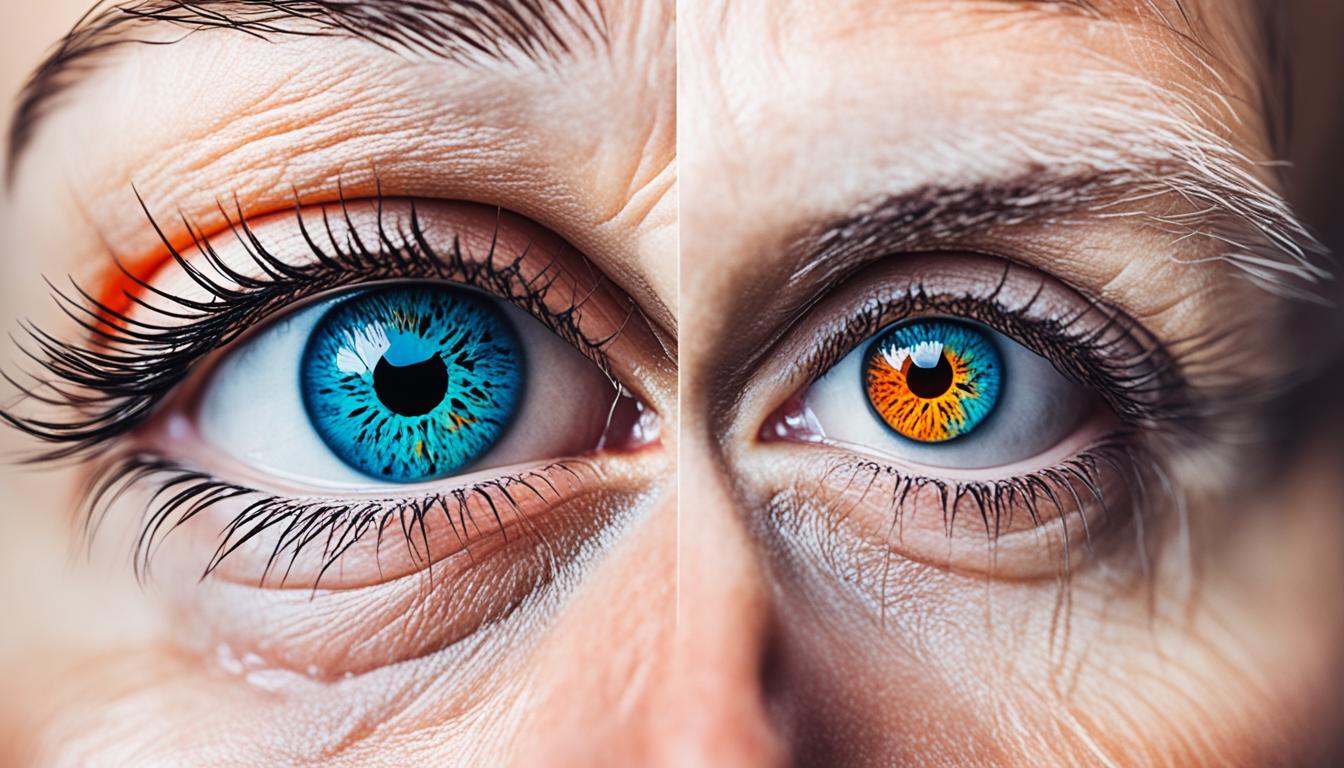Reiter’s syndrome is a type of reactive arthritis. It mostly affects the joints. You might feel joint pain, see swelling, or notice they are inflamed. The cause isn’t fully understood, but a bacterial infection can set it off. This infection usually starts in the gut or the urogenital area. Many people with Reiter’s show a special gene, HLA-B27, in their genetic tests.
This syndrome doesn’t just bother the joints. It can also make your eyes swell or give you a red eye lining. Doctors diagnose it by looking at your symptoms, health history, and running specific tests like genetic screenings for HLA-B27.
Although there’s no cure, treatments are available to help lessen symptoms and avoid problems. Stem cell therapy is being explored as a new treatment. It aims to repair damaged tissues and lower joint inflammation. Research into how effective this therapy is, needs more understanding.
Key Takeaways:
- Reiter’s syndrome is an autoimmune condition that mainly impacts the joints.
- It brings symptoms like joint pain, swelling, and inflammation.
- Its cause isn’t fully clear, but a bacterial infection might start it.
- Diagnosis requires a careful check of symptoms, health background, and lab tests, including HLA-B27 gene testing.
- We can’t cure it, but many treatments can help with symptoms and stop further issues.
- Stem cell therapy is being looked at as a potential new way to treat Reiter’s syndrome.
- More studies are required to understand how well stem cell therapy might work for this syndrome.
Symptoms and Diagnosis of Reiter’s Syndrome
Reiter’s syndrome, known as reactive arthritis, targets the joints with symptoms like joint pain, inflammation, and swelling, particularly in the lower body. Joint issues can be few, affecting only one or a few, or spread throughout the body. This differs from person to person.
It’s not just the joints that can be affected by Reiter’s. Other body parts, like the eyes, can become inflamed too. Conditions like uveitis and conjunctivitis are often seen. These eye issues might happen at the same time as joint problems or right after.
If someone has the HLA-B27 gene, they’re more likely to get Reiter’s syndrome. Testing for this gene can confirm the diagnosis. It also helps doctors plan the best treatment.
Doctors use more than genetic tests to diagnose Reiter’s. Blood work and imaging are also done. These tests check for other diseases and see how much the body is inflamed. They help doctors figure out the right treatment.
Treatment and Management of Reiter’s Syndrome
The main focus in treating Reiter’s syndrome is to manage symptoms and lower inflammation. This helps to stop further issues from occurring. Doctors often recommend nonsteroidal anti-inflammatory drugs (NSAIDs) to help with joint pain and swelling. In tough cases, medications like corticosteroids and disease-modifying antirheumatic drugs are used. They work to lower your immune system activity and fight inflammation.
Physical therapy and certain exercises are very important for people with Reiter’s syndrome. They improve how your joints work and help you move better. These activities make your joints stronger, give you more flexibility, and ease pain. Making lifestyle changes also plays a big role. This includes keeping a healthy weight, staying active, and finding ways to manage stress. Doing these things can help a lot in managing symptoms and stopping more joint damage.
In the last few years, stem cell therapy has become a new hope for treating Reiter’s syndrome. Stem cells can repair tissue and reduce joint inflammation. Though this treatment is still being researched, it seems like it could be a great option in the future. It’s important to talk to your doctor about the best treatment plan for your Reiter’s syndrome.

